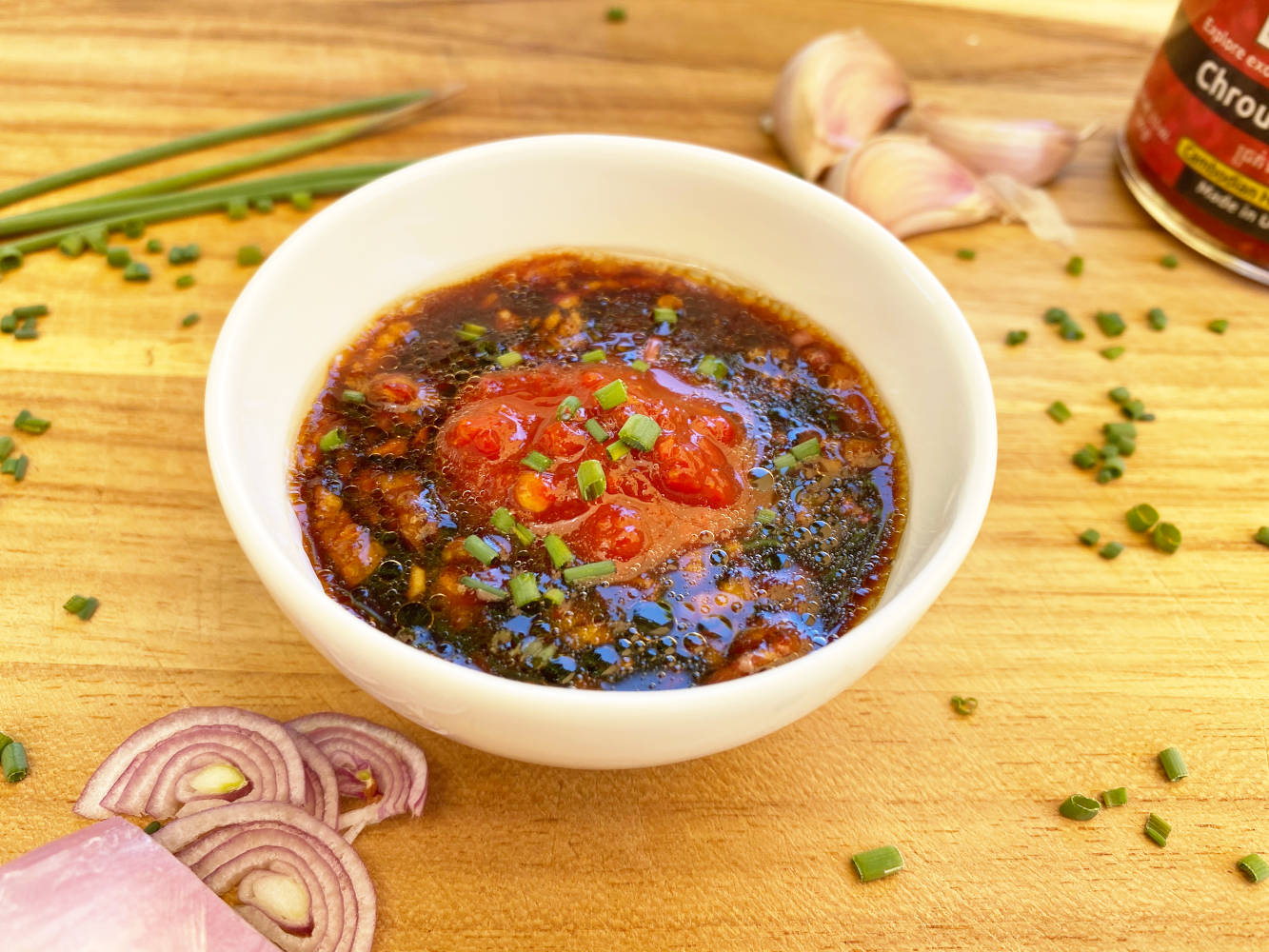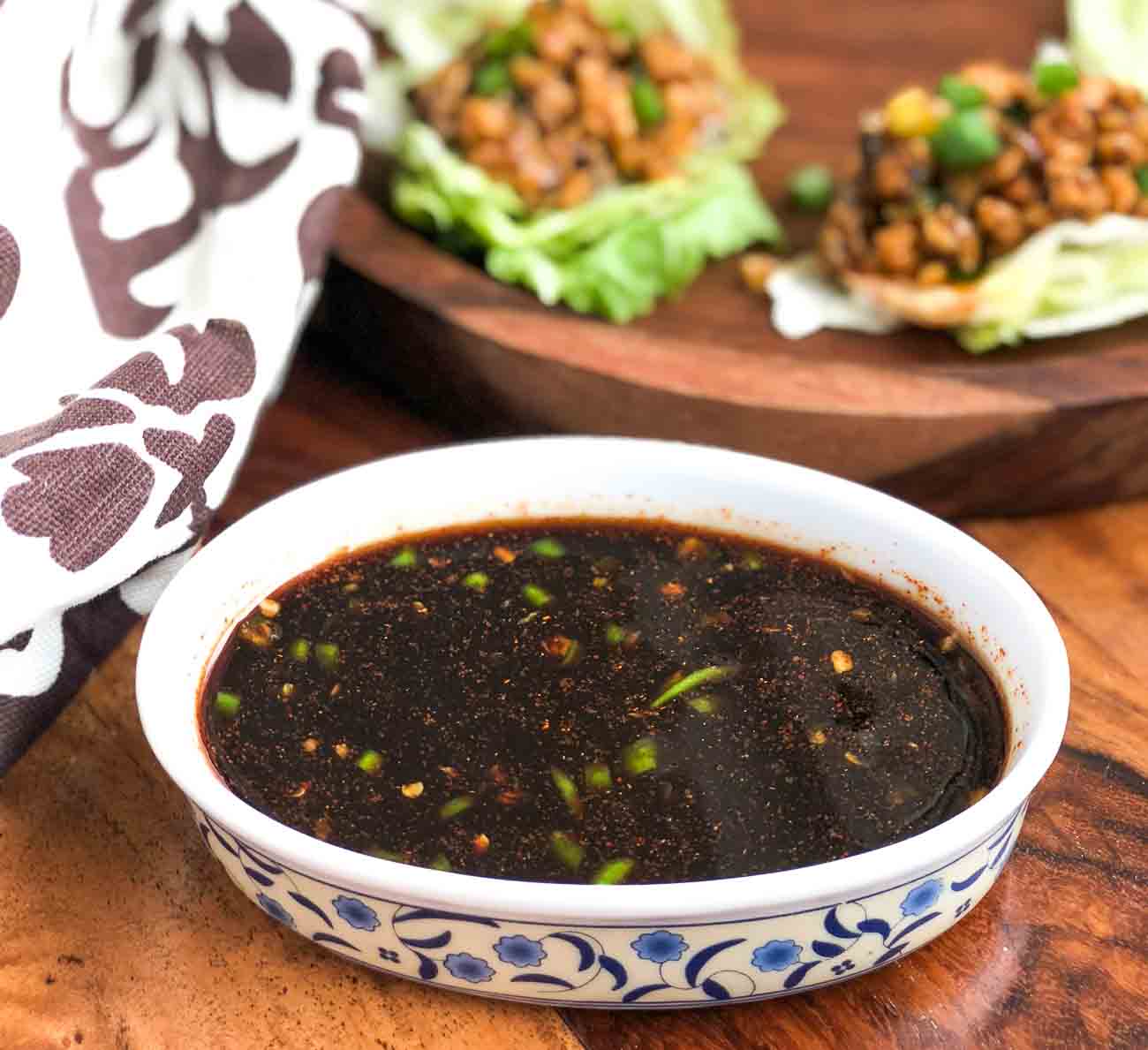Embark on a culinary adventure with the tantalizing flavors of spicy soy sauce. This versatile condiment adds a piquant kick to dishes worldwide, enhancing their savoriness and depth. Whether you’re a seasoned chef or a home cook seeking to elevate your meals, this recipe will guide you through the art of crafting your own spicy soy sauce, unlocking a world of culinary possibilities.
From the fiery heat of Sichuan cuisine to the subtle warmth of Japanese marinades, spicy soy sauce adds a vibrant layer of flavor to stir-fries, marinades, dipping sauces, and more. Prepare to ignite your taste buds and transform your cooking with this easy-to-follow recipe.
Introduction to Spicy Soy Sauce
Spicy soy sauce is a flavorful condiment that adds a kick to various dishes. It is made by combining soy sauce with chili peppers or other spicy ingredients, resulting in a savory and spicy flavor profile.
Spicy soy sauce is a popular ingredient in many cuisines, including Chinese, Japanese, Korean, and Thai. It is used as a dipping sauce for sushi, sashimi, dumplings, and spring rolls. It can also be added to stir-fries, noodles, soups, and marinades to enhance their flavor.
Variations of Spicy Soy Sauce
There are many variations of spicy soy sauce, each with its unique flavor and heat level. Some common variations include:
- Sriracha soy sauce: Made with sriracha hot sauce, which adds a sweet and spicy flavor.
- Gochujang soy sauce: Made with gochujang, a Korean chili paste, which adds a savory and spicy flavor.
- Wasabi soy sauce: Made with wasabi, a Japanese horseradish, which adds a sharp and spicy flavor.
Ingredients and Variations
The essential ingredients for making spicy soy sauce include:
- Soy sauce
- Chili peppers (fresh or dried)
- Garlic
- Ginger
- Sugar
The spiciness level of the sauce can be adjusted by varying the amount and type of chili peppers used. For a milder sauce, use fewer chili peppers or milder varieties. For a spicier sauce, use more chili peppers or hotter varieties.
Additional Ingredients
In addition to the essential ingredients, there are a number of optional ingredients that can be added to spicy soy sauce for additional flavor. These include:
- Sesame oil
- Rice vinegar
- Mirin
- Green onions
- Sesame seeds
Experiment with different combinations of ingredients to create a spicy soy sauce that suits your taste.
Step-by-Step s
Follow this detailed guide to prepare your own flavorful spicy soy sauce at home.
To ensure the best results, use high-quality soy sauce and fresh ingredients. Adjust the amount of chili peppers to suit your preferred level of spiciness.
Ingredients:
- 1 cup soy sauce
- 1/4 cup chili peppers, finely chopped (adjust quantity for desired spiciness)
- 1/4 cup rice vinegar
- 1/4 cup sugar
- 1 tablespoon sesame oil
- 1 teaspoon garlic powder
- 1 teaspoon ginger powder
Instructions:
- In a small saucepan, combine all ingredients.
- Bring to a boil over medium heat, stirring constantly.
- Reduce heat to low and simmer for 10-15 minutes, or until thickened to your desired consistency.
- Remove from heat and let cool slightly before using.
Serving and Storage
Spicy soy sauce is a versatile condiment that can be used in a variety of ways. It can be served as a dipping sauce for appetizers, sushi, or dumplings. It can also be used as a marinade for grilled or roasted meats, poultry, or fish.
Spicy soy sauce can also be added to stir-fries, soups, and sauces to give them a spicy kick.
To store spicy soy sauce, keep it in a sealed container in the refrigerator for up to 2 months. The sauce may darken over time, but it is still safe to use.
Shelf Life
- Homemade spicy soy sauce typically lasts for about 2 weeks when refrigerated in an airtight container.
- Store-bought spicy soy sauce generally has a longer shelf life due to the addition of preservatives. Refer to the manufacturer’s label for specific storage instructions.
Recipe Ideas

Spicy soy sauce is a versatile ingredient that can elevate the flavors of a wide range of dishes. Here are a few recipe ideas that showcase its culinary potential:
Incorporating spicy soy sauce into stir-fries is a quick and easy way to add depth and complexity to your favorite vegetables and proteins. Simply add a few tablespoons of spicy soy sauce to your stir-fry sauce, and you’ll be rewarded with a dish that’s both flavorful and satisfying.
Spicy soy sauce can also be used as a marinade for meats, poultry, and seafood. The spicy flavor will penetrate the food, resulting in a tender and juicy dish with a tantalizing kick. Simply combine spicy soy sauce with your favorite spices and herbs, and let the meat marinate for several hours or overnight before cooking.
Spicy soy sauce makes an excellent dipping sauce for appetizers, entrees, and even desserts. Its spicy and savory flavor pairs well with a variety of foods, from crispy fried chicken to grilled vegetables. Simply whisk together spicy soy sauce with a little bit of rice vinegar or lime juice, and you’ll have a delicious dipping sauce that will add a burst of flavor to your favorite dishes.
Health Benefits
Spicy soy sauce is not only a delicious condiment but also offers potential health benefits. It contains antioxidants that may protect against cell damage and reduce the risk of chronic diseases.
Antioxidant Properties
Soy sauce contains isoflavones, a type of antioxidant that has been linked to various health benefits. Isoflavones have been shown to:
- Reduce inflammation
- Protect against heart disease
- Improve cognitive function
Additionally, the capsaicin in chili peppers, which is responsible for the spicy flavor, has antioxidant and anti-inflammatory properties. Studies have shown that capsaicin may:
- Reduce pain
- Boost metabolism
- Protect against cancer
It is important to note that while spicy soy sauce may offer some health benefits, it is still high in sodium. Excessive sodium intake can lead to high blood pressure and other health problems. Therefore, it is recommended to consume spicy soy sauce in moderation.
Conclusion

With its versatility and ability to elevate any dish, spicy soy sauce is a must-have in every kitchen. Experiment with different spice levels and additional ingredients to create a customized condiment that caters to your palate. Whether you’re a novice cook or an experienced culinary enthusiast, this recipe empowers you to unlock the full potential of spicy soy sauce and embark on a journey of flavor exploration.
Questions and Answers
What is the shelf life of homemade spicy soy sauce?
When stored in an airtight container in the refrigerator, homemade spicy soy sauce can last up to 2 weeks.
Can I use this recipe as a marinade for meats?
Absolutely! The spicy soy sauce marinade adds a delicious flavor to meats, tenderizing them and infusing them with a savory, slightly spicy taste.
What are some alternative ingredients I can use to add heat?
For a more intense heat, you can substitute chili powder or cayenne pepper for the red pepper flakes. Sriracha or sambal oelek can also be added to taste.
